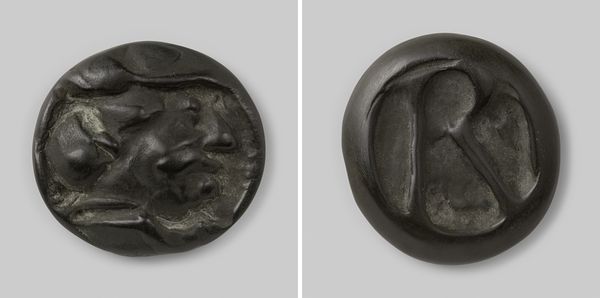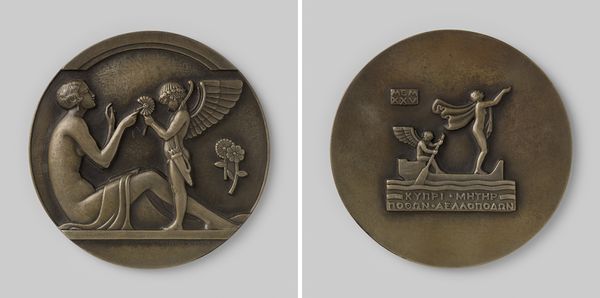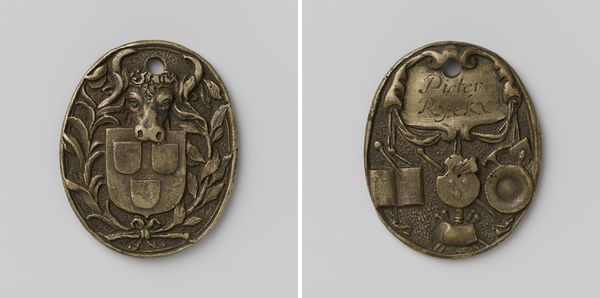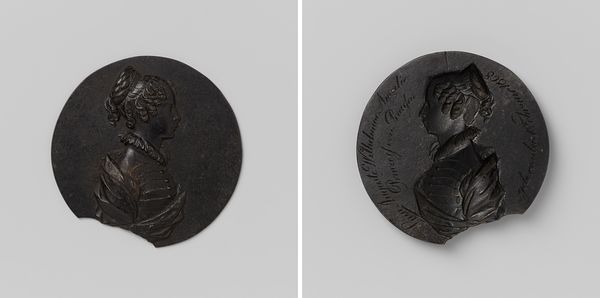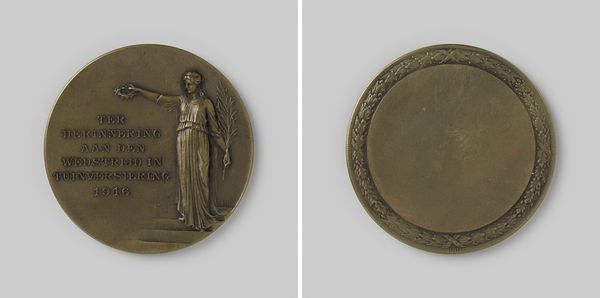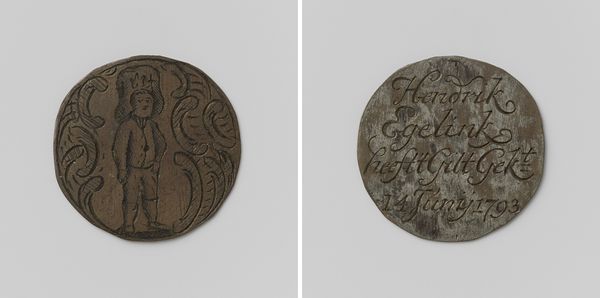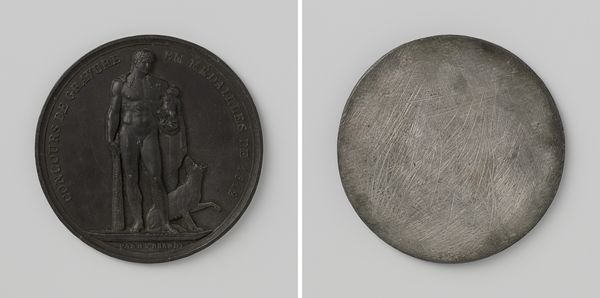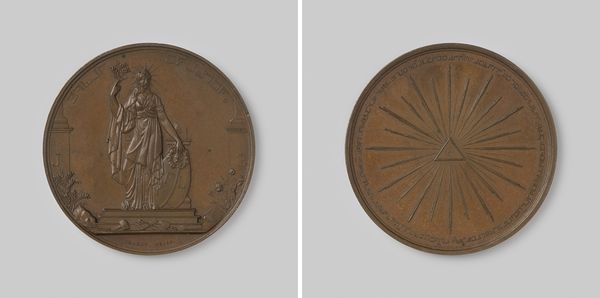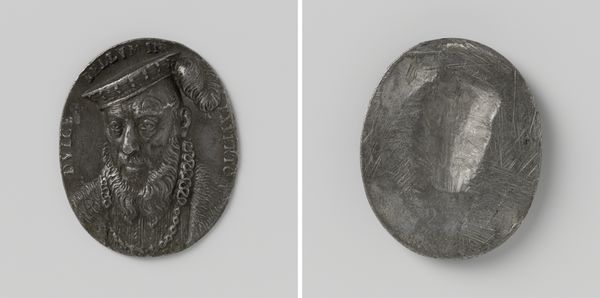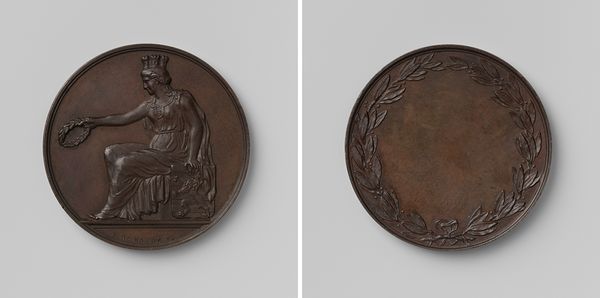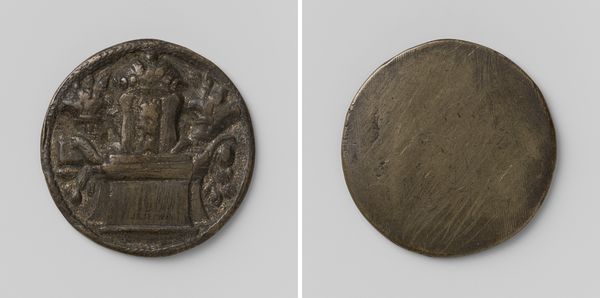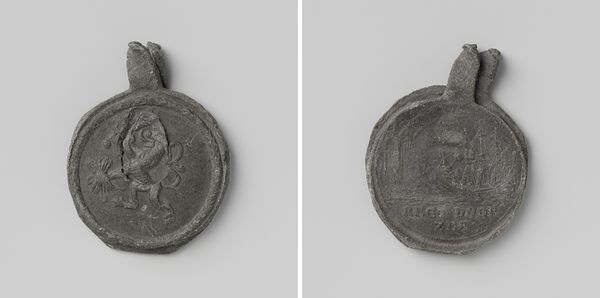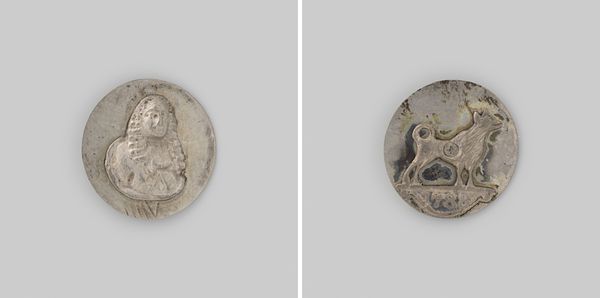
bronze, sculpture
#
portrait
#
contemporary
#
sculpture
#
bronze
#
figuration
#
sculpture
#
modernism
Dimensions: diameter 7.0 cm, weight 214.6 gr
Copyright: Rijks Museum: Open Domain
Curator: This cast bronze relief, held here at the Rijksmuseum, is entitled "Jaar van de Vrouw 1975." It's by Rudi Augustinus, and commemorates International Women's Year. What are your initial thoughts? Editor: It strikes me as quite austere. The dark bronze gives it a solemn weight. The composition on one side looks almost like a family grouping, stylized and elongated, yet restrained. Curator: Absolutely. Augustinus’s choice of bronze underscores the monumentality, imbuing it with a sense of permanence. You mentioned the grouping, but on the opposite side, the symbolism is quite direct: the female symbol intersecting what appears to be an equality sign, surrounded by "1975 Year of the Woman". This links directly to the social movements of the time, of course. Editor: Yes, the iconography is very explicit. The deliberate, almost hard-edged font and the prominent symbol are powerful declarations. The elongated figures are more evocative and perhaps, intended to stir feelings related to community and purpose. Did the artist have a particular message beyond the obvious dedication of the work? Curator: Augustinus was definitely engaged with social themes and sought to integrate his artistic practice with broader cultural concerns. Bronze casting itself is labor intensive, embedding time, energy, and even the social dynamics of the foundry within the art itself. I imagine access to this kind of facility was tied to a network or collective dedicated to production? Editor: That's a keen observation about process and context, it leads me to the material impact and meaning of that time and dedication. Even with its social justice theme and intent, I perceive a more complex emotional expression. A blend of hope with, perhaps, a stoic acceptance of the long journey toward genuine parity. Curator: And by grounding this work in material reality—the very deliberate choice of bronze, and understanding of labour—we avoid slipping into idealizing abstraction. We’re brought back to concrete actions and societal impacts, even now, almost fifty years later. Editor: Yes, considering this artifact with the blend of direct iconography and sculptural rendering provides a potent insight into the period’s social and political milieu. Curator: Indeed, this relief speaks to a critical moment, both materially and symbolically, and it continues to echo across generations.
Comments
No comments
Be the first to comment and join the conversation on the ultimate creative platform.
